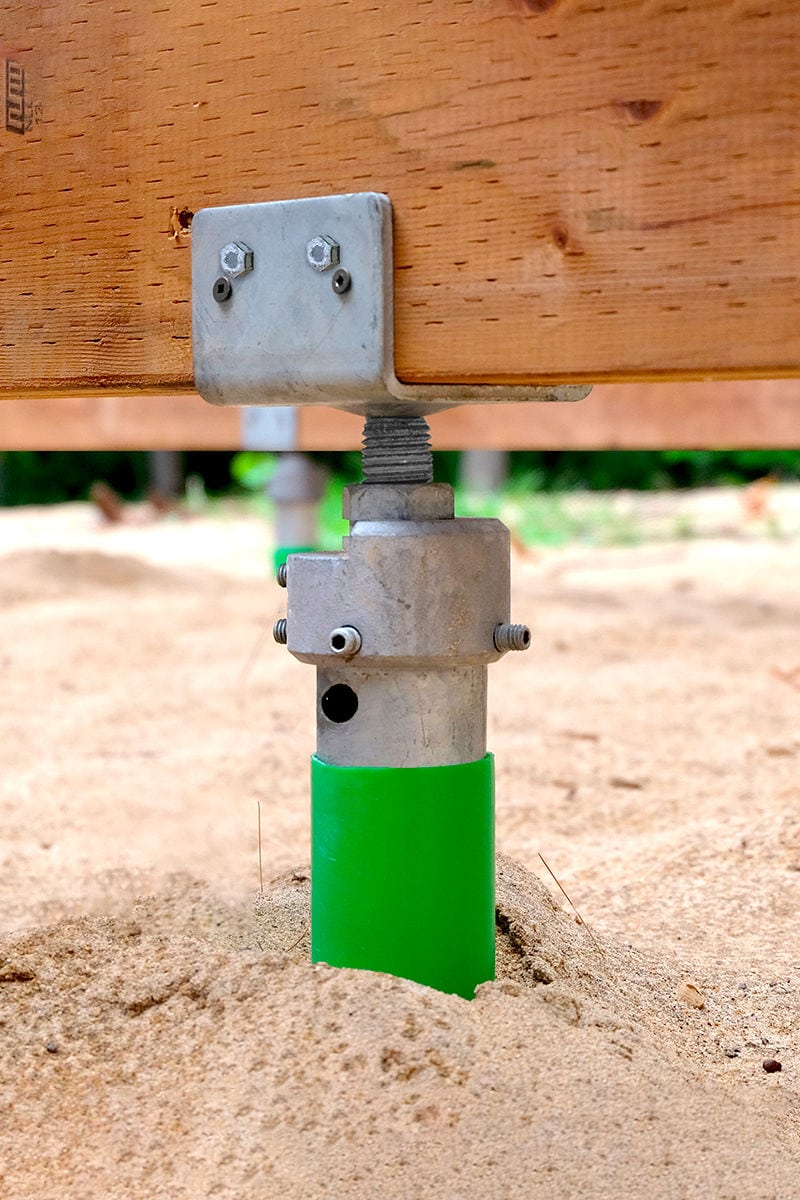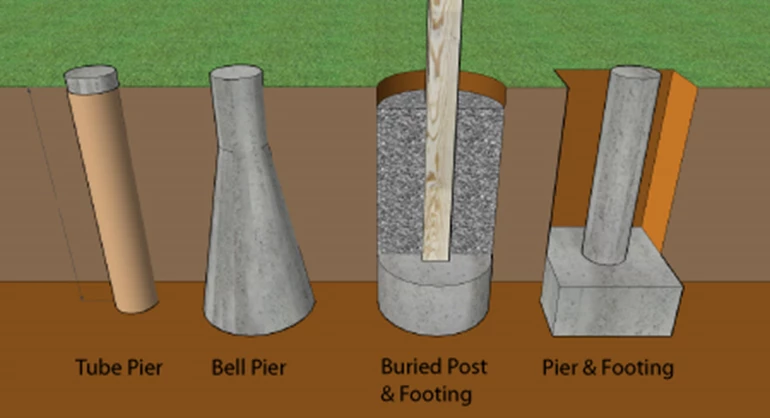Picking the Right Deck Footings for Security and Longevity
The longevity and safety and security of your deck depend heavily on the type of grounds you pick, as they supply the necessary assistance and security to stand up to the examination of time. In this discussion, we will discover the numerous kinds of deck footings, take into consideration the important elements to consider when making a choice, and delve into the pros and disadvantages of various options.
Kinds Of Deck Grounds
There are numerous kinds of deck footings that can be utilized, each offering one-of-a-kind benefits and considerations. One common kind of footing is the concrete pier ground. These grounds are composed of a cylindrical hole full of concrete, which offers a solid structure for the deck posts. Concrete pier footings are relatively simple to set up and use excellent security, making them a prominent choice for several deck jobs.
These grounds are mounted by screwing them into the ground, which creates a protected foundation for the deck. They also allow for easy adjustment and progressing of the deck if required.
Conversely, some builders go with precast concrete footings. These footings are made of durable concrete and come in numerous forms and sizes to accommodate various deck layouts. Precast concrete grounds are hassle-free to set up and supply a steady base for the deck structure.
Finally, an additional alternative is the post-in-anchor ground system. This kind of ground includes driving a steel anchor right into the ground and connecting it to the deck blog post. It provides flexibility in regards to positioning the deck blog posts and appropriates for decks with lightweight structures.
When picking the best kind of deck footing, it is necessary to think about variables such as soil problems, deck load, and regional building ordinance (Deck Footings). Consulting with a professional service provider or structural engineer can aid guarantee the ideal footing is selected for a safe and steady deck
Elements to Consider When Picking Grounds
When selecting the appropriate grounds for a deck, it is important to very carefully consider numerous factors such as soil problems, deck load, and adherence to regional building regulations. These elements play a significant function in guaranteeing the stability and durability of the deck framework.
One of the main variables to think about is the dirt conditions. The type of dirt on which the deck will certainly be built figures out the type of footings called for. For example, decks improved loosened or sandy soils may call for much deeper grounds to give adequate support and stop settling. On the various other hand, decks constructed on clay or large dirts may need grounds that can accommodate the dirt's tendency to expand and agreement.
An additional crucial aspect is the deck tons. The weight of the deck, including the products utilized and any type of prospective online loads such as furniture or celebrations, must be taken into consideration when picking grounds. The footings have to be created to bear the weight of the deck and distribute it equally to stop any type of structural concerns or failings.
Lastly, adherence to neighborhood building ordinance is vital. Building ordinance differ from area to region, and it is vital to conform with the particular requirements established by the local authorities. Deck Footings. These codes ensure that the deck is constructed safely and meets the essential requirements for structural integrity and load-bearing ability
Concrete Grounds: Cons and pros

Concrete footings offer numerous advantages and negative aspects when utilized as the foundation for a deck. On the favorable side, concrete grounds supply exceptional stability and sturdiness. Concrete is a strong and stiff material that can support heavy tons and endure different weather. It likewise has a lengthy lifespan, making it a trusted selection for long-term usage.
Another advantage of concrete grounds is their convenience. They can be put right into various forms and sizes to fit different deck styles and setups. Concrete footings can be personalized to fit the particular needs and requirements of the deck structure.
However, there are also some downsides to making use of concrete grounds. One significant downside is the expense and labor associated with their installation. Concrete grounds call for excavation and usually require the aid of hefty equipment. This can raise the total cost of the deck project and may need specialist aid.

Helical Piers Vs. Sonotubes: Which Is Better?
In thinking about the foundation options for a deck, the contrast in between helical piers and sonotubes is critical in establishing the premium option. They are twisted right into the ground utilizing hydraulic machinery, giving a resilient and stable structure for the deck.
When it pertains to stability and resilience, helical piers have the top hand. The helical plates on the piers produce a strong grip with the dirt, avoiding any activity or moving of the deck. This is specifically helpful in areas with unpredictable or moving soil problems. Sonotubes, on the various other hand, depend solely on the concrete filling up for stability, which might not use the same level of stamina and resistance.
In regards to installation, helical piers are relatively less complicated and faster to set up compared to sonotubes. The hydraulic equipment utilized to twist the piers right into the ground makes certain a efficient and quick procedure. Sonotubes, on the other hand, require excavating openings and pouring concrete, which can be taxing and labor-intensive.
In addition, helical piers are a more functional alternative. If needed, they can be used in different dirt problems and can be readjusted or reinforced. Sonotubes, on the other hand, may need added assistance, such as rebar, in particular dirt conditions or areas with high load demands.
Picking the Right Footings for Your Deck's Measurements
For optimum structural integrity, it is necessary to thoroughly choose the ideal grounds that line hop over to these guys up with the measurements of your deck. The dimensions of your deck, including its length, height, and go to this web-site width, play a substantial duty in determining the kind and dimension of footings needed.
When picking footings for your deck, it is essential to consider the load-bearing capability of the dirt. The weight of the deck, integrated with the weight of any kind of furnishings or individuals on it, puts in a substantial pressure on the grounds (Deck Footings). Consequently, it is critical to pick footings that can appropriately sustain this weight without sinking or shifting with time.
Larger decks with greater dimensions need bigger grounds to offer sufficient security and support. The form of the footings, whether they are square or round, depends on the layout and layout of the deck.
Verdict
In conclusion, selecting the appropriate deck footings is vital for ensuring stability and sturdiness. Variables such as the type of footings, the deck's measurements, and the pros and cons of different alternatives should be thought about.
These grounds consist of a round hole loaded with concrete, which gives a solid foundation for the deck blog posts. Concrete pier footings are fairly easy to install and provide superb security, making them a popular option for many deck click to find out more jobs.
Precast concrete grounds are hassle-free to set up and provide a secure base for the deck framework.
It offers flexibility in terms of positioning the deck posts and is appropriate for decks with light-weight frameworks.
Concrete grounds offer several advantages and drawbacks when utilized as the foundation for a deck.